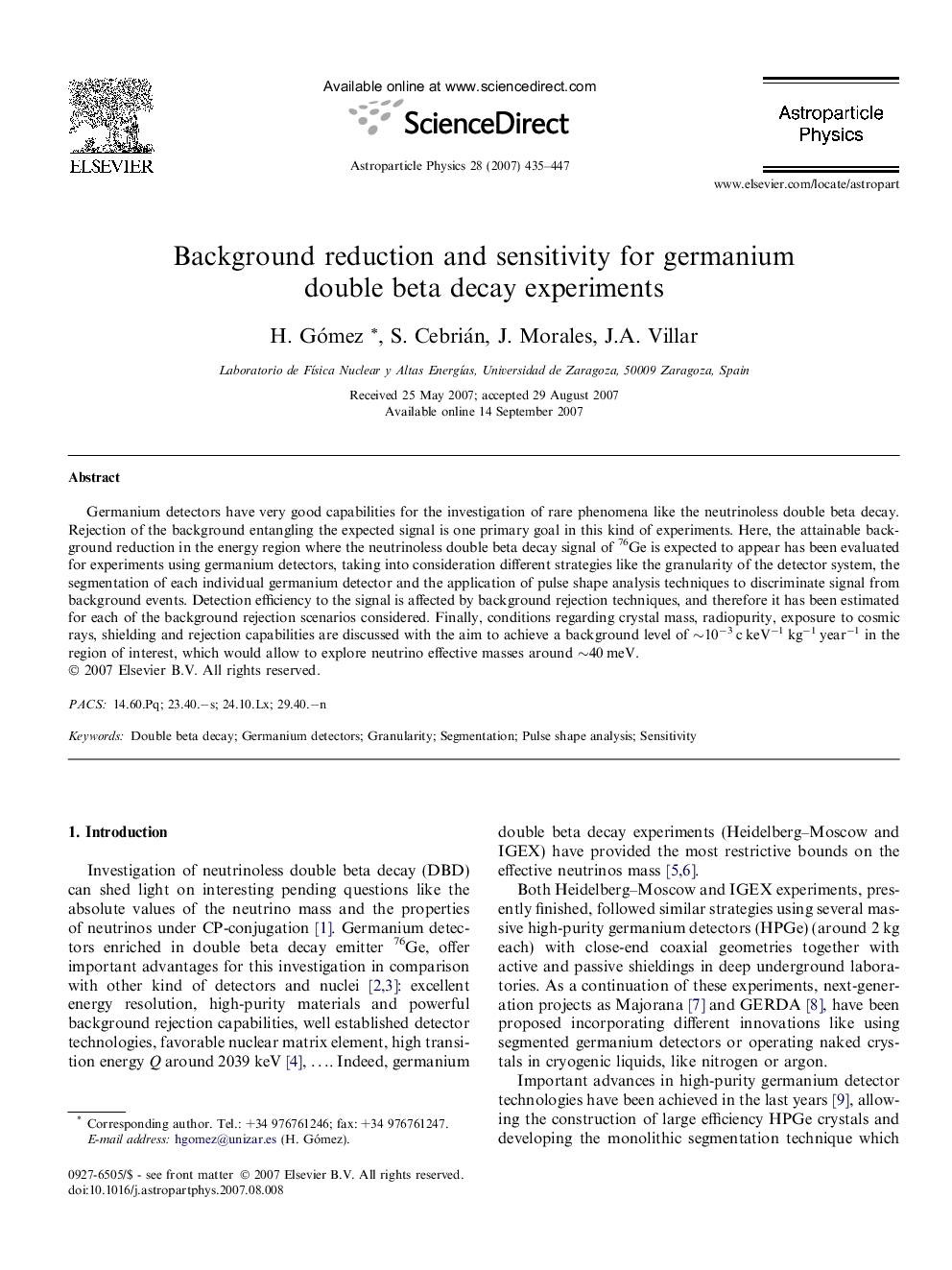| Article ID | Journal | Published Year | Pages | File Type |
|---|---|---|---|---|
| 1771421 | Astroparticle Physics | 2007 | 13 Pages |
Germanium detectors have very good capabilities for the investigation of rare phenomena like the neutrinoless double beta decay. Rejection of the background entangling the expected signal is one primary goal in this kind of experiments. Here, the attainable background reduction in the energy region where the neutrinoless double beta decay signal of 76Ge is expected to appear has been evaluated for experiments using germanium detectors, taking into consideration different strategies like the granularity of the detector system, the segmentation of each individual germanium detector and the application of pulse shape analysis techniques to discriminate signal from background events. Detection efficiency to the signal is affected by background rejection techniques, and therefore it has been estimated for each of the background rejection scenarios considered. Finally, conditions regarding crystal mass, radiopurity, exposure to cosmic rays, shielding and rejection capabilities are discussed with the aim to achieve a background level of ∼10−3 c keV−1 kg−1 year−1 in the region of interest, which would allow to explore neutrino effective masses around ∼40 meV.
